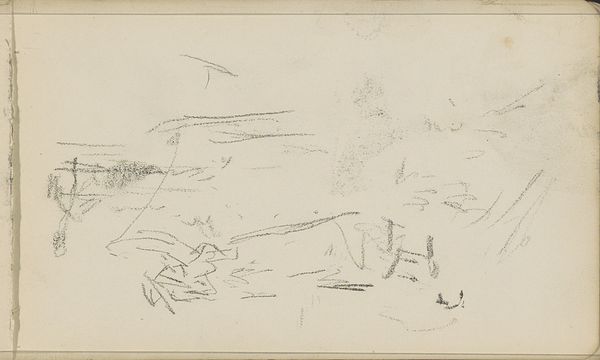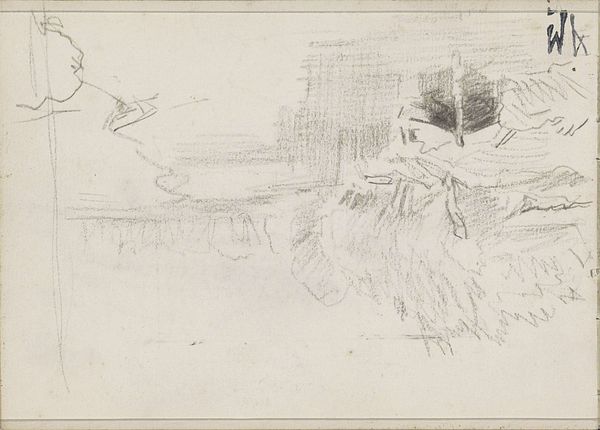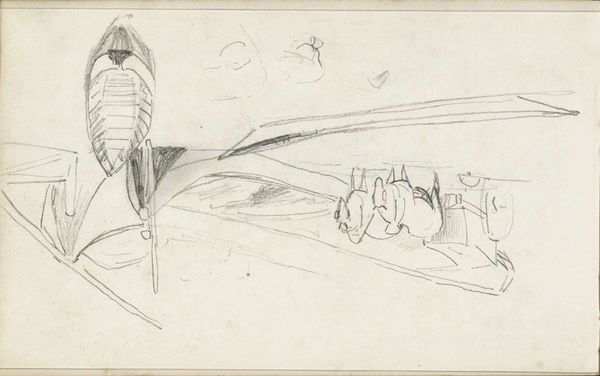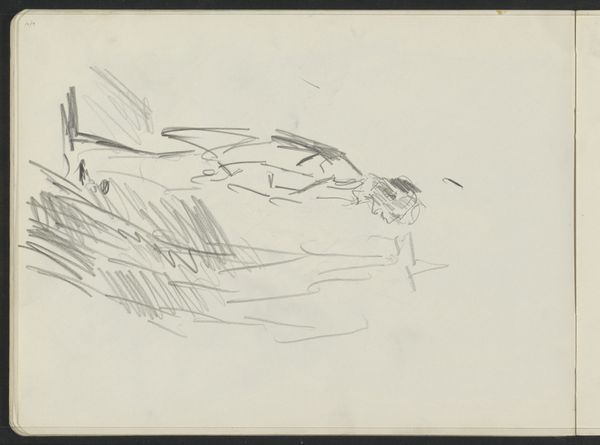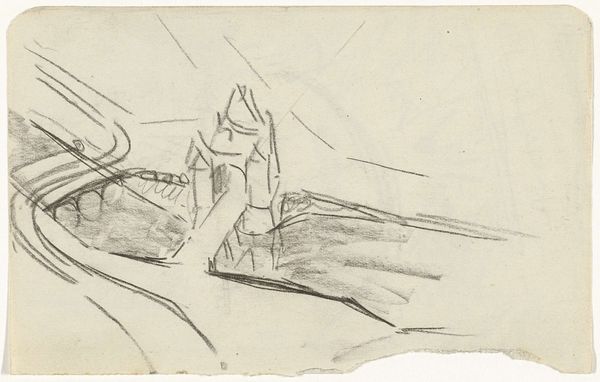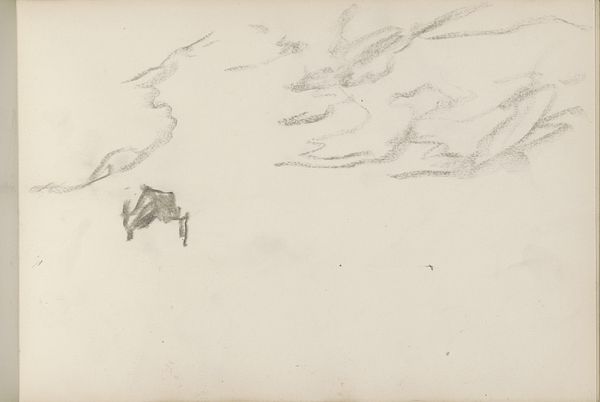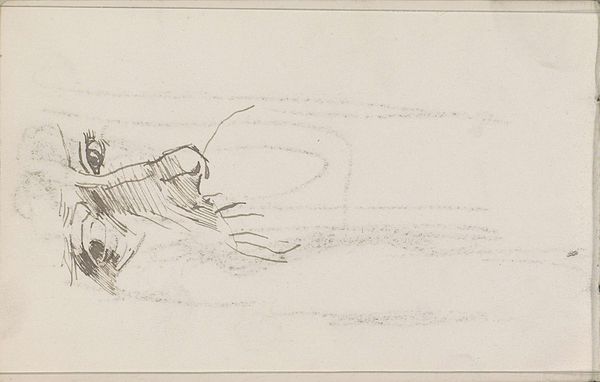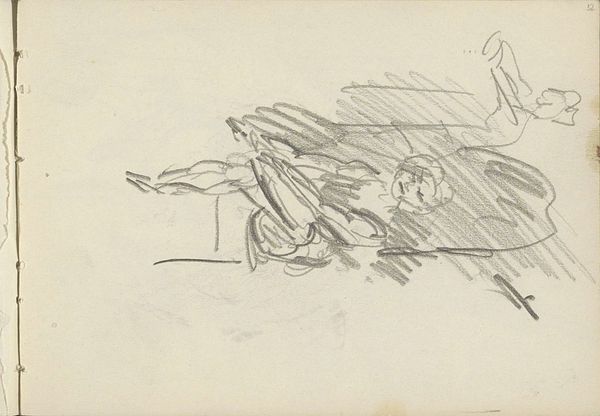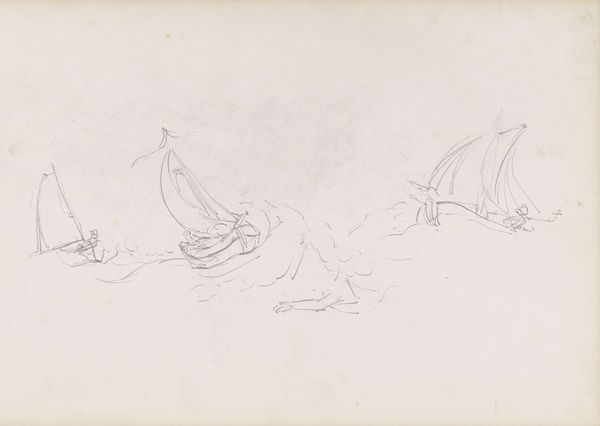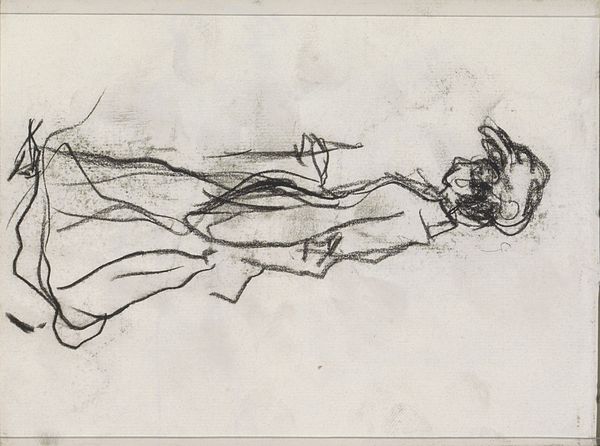
Gefantaseerde watervogel met een hoge hoed en een strik om de nek c. 1894
0:00
0:00
drawing, pencil
#
drawing
#
imaginative character sketch
#
quirky sketch
#
pen sketch
#
fantasy-art
#
figuration
#
personal sketchbook
#
idea generation sketch
#
ink drawing experimentation
#
pen-ink sketch
#
pencil
#
symbolism
#
sketchbook drawing
#
storyboard and sketchbook work
#
sketchbook art
Copyright: Rijks Museum: Open Domain
Editor: This drawing, from around 1894, is titled "Fantasized Water Bird with a Top Hat and a Bow Tie," by Julie de Graag. It looks like a pencil sketch. It's really unusual, kind of dreamlike and absurd. What's your take on this, especially given its context? Curator: The whimsy strikes me immediately. De Graag lived at a time when artists were questioning social conventions. What appears at first as mere playful imagination might also critique the rigid societal expectations of the era, the bird perhaps symbolizing those constrained by the trappings of bourgeois life. Does the top hat seem satirical to you? Editor: It definitely feels like satire, but I hadn't considered it in such a direct way. The multiple floating heads also feel like a rejection of classical portraiture. Curator: Precisely! And look at the stark, unadorned presentation – more about process and exploration than finished product. What role might institutions like the Rijksmuseum have in preserving even unfinished or 'minor' works like this one? Is it to simply document an artist's full career? Editor: That's a great point. Preserving sketches like this maybe challenges the conventional idea of what's museum-worthy. It democratizes art, showing the raw, creative process behind the finished piece. Curator: Yes, and it reveals how artists generate ideas. The public role of art then becomes less about admiration of beauty, and more about inspiration. This piece, simple as it is, reflects evolving notions of art's value in society. Editor: It’s amazing to think this quirky little sketch holds so much commentary on its time, and on art institutions themselves! I will never look at a “simple” drawing the same way again.
Comments
No comments
Be the first to comment and join the conversation on the ultimate creative platform.
